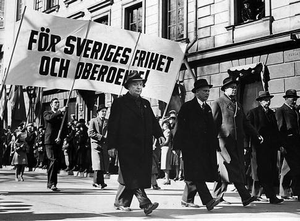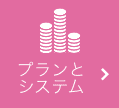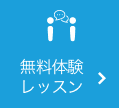The Swedish welfare model(スウェーデンの福祉モデル)
Cold and dark Sweden might not seem to be altogether a paradise, but when it comes to
social standards it is far ahead of most nations.
The concept of Swedish welfare is based
upon the principle that everyone should have access to education, healthcare, child care and elderly care.
寒く暗いスウェーデンはすべて楽園のようには見えないかもしれません。でも、社会標準は、はるかにほとんどの国家より進んでいます。
スウェーデンの福祉のコンセプトはすべての人が教育やヘルスケアやチャイルドケア、高齢者介護にアクセスできるという原理に基づいています。
The ‘Swedish model’ was created in 1938 with the signing of the labour market treaty
between strong trade unions, innovative companies and a solid welfare state.
The
driving forces behind “the Swedish model” were the Social Democratic Party and the
trade unions.
In the picure from 1941 you can see the Social Democratic Party leader
Per Albin Hansson who came up with the political idea ”Folkhemmet” or ” The Peoples
Home”.
スウェーデンモデルは1938年に強い(職種別)労働組合と革新的な会社、健全な福祉国家との間で労働市場条約の署名によりつくられました。
その「スウェーデンモデル」の陰の原動力は社会民主党と労働組合でした。
写真は1941年のもので、政治的な考え「Folkhemmet」「The Peoples Home」を考え出した社会民主党のリーダー、アルビン・ハンソンです。
※ Folkhemmet , The Peoples Home・・・・国民の家(こくみんのいえ、スウェーデン語: Folkhemmet、英語: the people’s home)は、スウェーデン社会民主労働党とスウェーデンにおける福祉国家の歴史の中で、最重要視されている政治概念である。また、1932年~1976年に亘る社民党の長期政権を表す用語でもある。場合によれば「スウェーデン式第三の道」を示す概念、すなわち「国民の家」を資本主義と共産主義の中間として考える向きもある。

Today the number of private schools is growing rapidly and there is a greater
privatization in the healthcare sector.
Inequalities have risen according to OECD, and
critics from the left would argue that the Swedish welfare society has deteriorated due
to the increasing gap between rich and poor, while others would say that it has finally
become financially viable.
現在、市立学校の数は急速に増大しており、ヘルスケアのセクターはより大きな民営化が進んでいます。
OECDによると、社会不平等が拡大してきています。そして、左派系の評論家は貧富の格差が今後もっと増加することにより、スウェーデンがかつて誇った福祉社会が劣化してきていると主張する一方で、他の評論家たちは財政面からやむを得ないと考えています。
Education is still free, healthcare is cheap, childcare is universal but you still have the
opportunity to control your economic future.
Sweden seems to have found a middleway
between socialism and capitalism.
教育は自由だし、ヘルスケアは安くて、チャイルドケアは誰でも受けられますが、一方で、自分自身の経済的将来をコントロールス機会は十分にあります。
スウェーデンは社会主義と資本主義の中間の道を見つけたように思えます。
To maintain the prized social welfare system Swedes pay high taxes, but they are no
longer the highest-taxed people in the world.
In the Swedish social welfare system the highest priority are the children.
Health care is
in most counties free for children up to the age of 18, as are all natal appointments and
check-ups.
For grown-ups there is a yearly limit to what you will pay for healthcare.
Dental care is free of charge for children until the year they turn 20.
社会福祉システムを維持するために、スウェーデン人は高い税を納付します。しかし、今では世界一高いわけではありません。
スウェーデンの社会福祉システムで最優先事項は子どもです。
出産や検診などすべてのヘルスケアは18歳までのこどもならほとんどの州で自由に受けることができます。
大人にはヘルスケアにお金を支払うのは年1回の制限があります。歯科治療は20歳までは無料で受けることができます。
Children are entitled to child allowance a monthly, tax-free allowance is paid until the
age of 16.
After 16, children in full-time education are entitled to a study allowance.
子どもは16歳までの間、毎月の非課税控除が払われる児童扶養手当を得る権利を与えられます。
16歳になった後に、正規の就学期間の子どもは就学手当てを得る権利を与えられます。
In 2008 life expectancy in Sweden was 83 years
for women and 79 years for men.
The retirement age is 65.
スウェーデンの2008年の平均寿命は女性が83歳で男性が79歳、定年退職は65歳です。

Sourse: sweden.se
Susanna




















